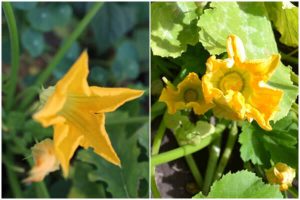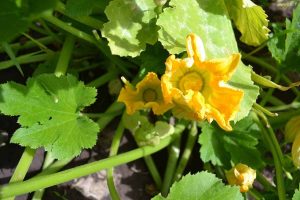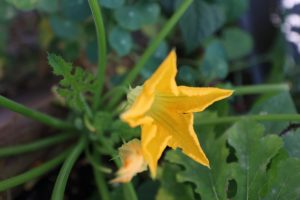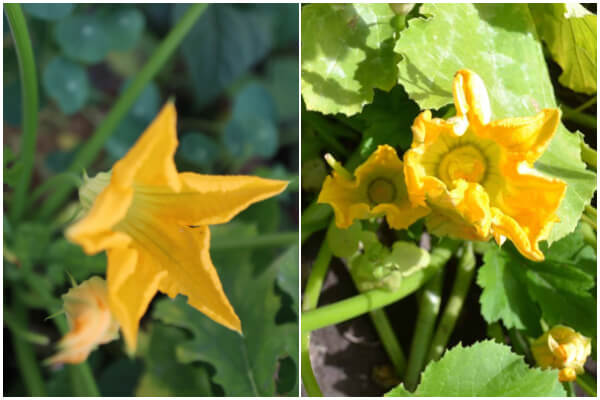Zucchini is a favorite among home gardeners for its ease of cultivation and abundant yields. However, one common and frustrating issue gardeners face is when zucchini plants produce plenty of flowers but fail to develop fruit. This problem, while disheartening, is fixable with the right knowledge and strategies.

In this comprehensive guide, we’ll delve into the reasons behind this issue and provide detailed, actionable solutions to ensure your zucchini plants thrive and deliver a bountiful harvest.
Understanding Zucchini Flowering
Zucchini plants produce two types of flowers: male flowers and female flowers. Understanding their roles is critical to solving the problem of no fruit.
- Male Flowers:
- Appear first and are produced in larger numbers.
- Feature a long, slender stem and contain pollen but do not develop into fruit.
- Female Flowers:
- Appear later and have a small, undeveloped zucchini at their base.
- Require pollen from male flowers to develop into mature zucchini.
If pollination doesn’t occur, the female flowers will wither, and no fruit will form.
Why Zucchini Flowers but No Fruit?
Several factors can lead to this issue. Let’s explore the common causes:

1. Pollination Problems
Zucchini plants depend on pollinators, like bees, butterflies, and other insects, to transfer pollen from male to female flowers. A lack of these pollinators can result in failed pollination.
2. Timing Imbalance
It’s common for male flowers to appear before female flowers, particularly early in the growing season. If female flowers don’t bloom simultaneously with male flowers, pollination can’t occur.
3. Environmental Stress
Stressful conditions such as extreme temperatures, drought, or high humidity can negatively affect flower development and pollination. For example, high heat may cause flowers to drop prematurely.
4. Overuse of Nitrogen Fertilizer
Fertilizers rich in nitrogen encourage leafy growth but can suppress flower and fruit production.
5. Poor Plant Spacing
Crowded plants compete for resources, leading to fewer female flowers and reduced pollination.
6. Inconsistent Watering
Irregular watering can stress plants and interfere with flower and fruit development.
How to Fix Zucchini Flowers but No Fruit
Now that you understand the causes, here’s how to address them effectively:
1. Hand-Pollinate the Flowers
When pollinators are scarce, manual pollination can save the day.
- Identify Male and Female Flowers: Male flowers have a long stem, while female flowers have a tiny zucchini at the base.
- Transfer Pollen: Use a small paintbrush, cotton swab, or remove a male flower, peel back the petals, and gently brush the pollen onto the stigma of a female flower.
- Best Time to Pollinate: Early morning is ideal, as zucchini flowers are most receptive then.
2. Attract More Pollinators
Creating a pollinator-friendly environment can significantly improve natural pollination.
- Plant Pollinator-Friendly Flowers: Include blooms like lavender, sunflowers, zinnias, or marigolds near your zucchini plants.
- Provide a Water Source: A shallow dish of water with pebbles can help hydrate pollinators.
- Avoid Pesticides: Opt for organic pest control methods, as chemical pesticides can harm pollinators.
3. Balance Fertilizer Use
Excessive nitrogen can lead to lush foliage but poor fruiting. Use a balanced fertilizer or one with higher phosphorus and potassium (such as 5-10-10) to promote flower and fruit development.
4. Optimize Growing Conditions
Environmental factors play a crucial role in successful pollination and fruiting.
- Maintain Proper Spacing: Ensure plants are spaced at least 2–3 feet apart for adequate airflow and light penetration.
- Mulch the Soil: Mulch helps retain moisture, regulate soil temperature, and reduce stress on the plant.
- Shade During Extreme Heat: Use shade cloth during hot afternoons to protect flowers from heat stress.
5. Regular Watering
Zucchini plants need consistent watering to thrive. Water deeply at the base of the plant 2–3 times a week, depending on weather conditions. Aim for about 1–2 inches of water per week.
6. Prune Excess Leaves
Overcrowded foliage can block sunlight and make it difficult for pollinators to reach the flowers. Remove a few larger leaves to improve airflow and visibility for pollinators.
Preventing Future Issues

Preventive measures can ensure your zucchini plants produce fruit consistently:
- Start with Quality Seeds: Choose seeds known for strong growth and productivity.
- Rotate Crops: Avoid planting zucchini in the same spot year after year to reduce pest and disease pressure.
- Regular Monitoring: Check for signs of stress, pests, or disease early.
- Companion Planting: Grow zucchini alongside pollinator-attracting plants and beneficial herbs like basil or thyme.
Additional Tips for Successful Zucchini Harvest
- Harvest Regularly: Picking mature zucchinis encourages the plant to produce more flowers and fruit.
- Avoid Overwatering: While consistent moisture is essential, soggy soil can lead to root rot and hinder fruit production.
- Choose the Right Varieties: Some zucchini varieties are more reliable fruit producers, even in challenging conditions. Look for hybrid varieties that promise high yields.
- Protect Plants from Pests: Common pests like squash bugs and cucumber beetles can damage flowers and reduce fruiting. Use row covers or organic sprays to manage these pests.
If your zucchini plants are producing flowers but no fruit, don’t worry—it’s a common issue with simple solutions. By addressing pollination problems, optimizing growing conditions, and taking preventive measures, you can enjoy a healthy and productive zucchini harvest.
Remember, gardening is about observation and adaptation. With the strategies outlined in this guide, you’ll soon be on your way to growing abundant zucchinis and enjoying the fruits of your labor.

